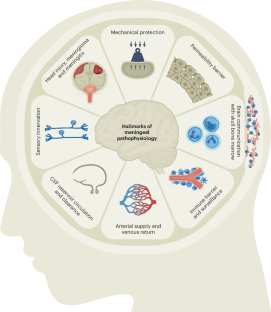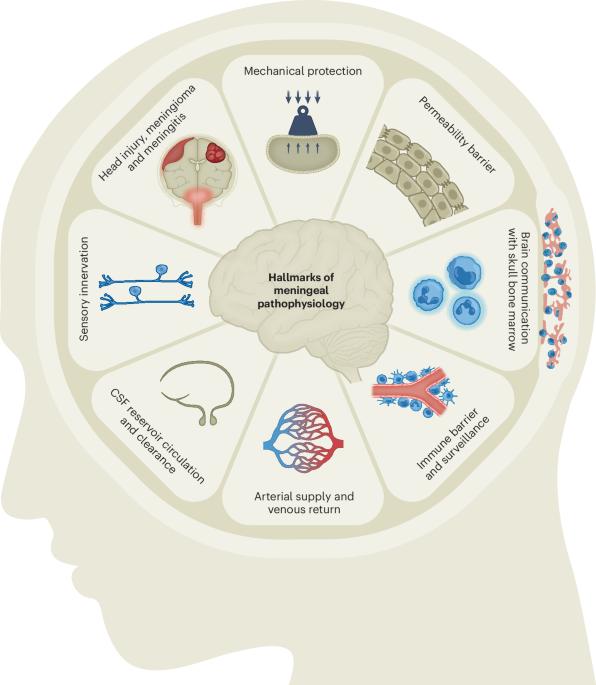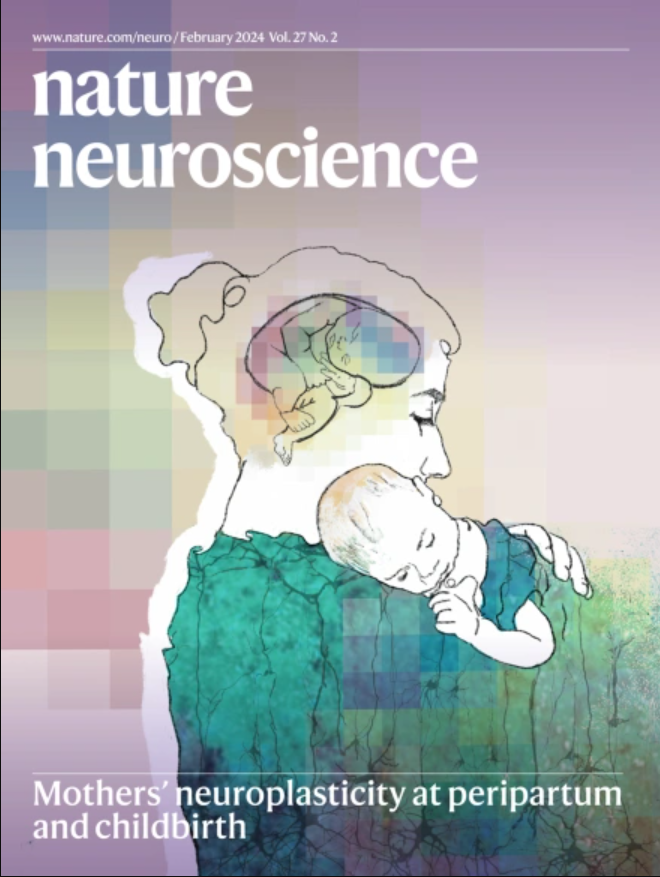Advances and controversies in meningeal biology
IF 21.2
1区 医学
Q1 NEUROSCIENCES
引用次数: 0
Abstract
The dura, arachnoid and pia mater, as the constituent layers of the meninges, along with cerebrospinal fluid in the subarachnoid space and ventricles, are essential protectors of the brain and spinal cord. Complemented by immune cells, blood vessels, lymphatic vessels and nerves, these connective tissue layers have held many secrets that have only recently begun to be revealed. Each meningeal layer is now known to have molecularly distinct types of fibroblasts. Cerebrospinal fluid clearance through peripheral lymphatics and lymph nodes is well documented, but its routes and flow dynamics are debated. Advances made in meningeal immune functions are also debated. This Review considers the cellular and molecular structure and function of the dura, arachnoid and pia mater in the context of conventional views, recent progress, and what is uncertain or unknown. The hallmarks of meningeal pathophysiology are identified toward developing a more complete understanding of the meninges in health and disease. The authors review current knowledge of the molecular identity and functions of the dura, arachnoid and pial layers of meninges and controversial aspects of meningeal biology that deserve further study to resolve ongoing debates in the field.


脑膜生物学的进展与争议
构成脑膜的硬脑膜、蛛网膜和桥膜,以及蛛网膜下腔和脑室中的脑脊液,是大脑和脊髓的重要保护层。这些结缔组织层与免疫细胞、血管、淋巴管和神经相辅相成,隐藏着许多秘密,直到最近才开始被揭开。现在已经知道,每一层脑膜都有不同分子类型的成纤维细胞。脑脊液通过外周淋巴管和淋巴结清除的情况有据可查,但其途径和流动动态仍有争议。脑膜免疫功能的研究进展也存在争议。本综述从传统观点、最新进展以及不确定或未知因素的角度,探讨硬脑膜、蛛网膜和桥脑的细胞和分子结构及功能。它确定了脑膜病理生理学的特征,以便更全面地了解健康和疾病中的脑膜。
本文章由计算机程序翻译,如有差异,请以英文原文为准。
求助全文
约1分钟内获得全文
求助全文
来源期刊

Nature neuroscience
医学-神经科学
CiteScore
38.60
自引率
1.20%
发文量
212
审稿时长
1 months
期刊介绍:
Nature Neuroscience, a multidisciplinary journal, publishes papers of the utmost quality and significance across all realms of neuroscience. The editors welcome contributions spanning molecular, cellular, systems, and cognitive neuroscience, along with psychophysics, computational modeling, and nervous system disorders. While no area is off-limits, studies offering fundamental insights into nervous system function receive priority.
The journal offers high visibility to both readers and authors, fostering interdisciplinary communication and accessibility to a broad audience. It maintains high standards of copy editing and production, rigorous peer review, rapid publication, and operates independently from academic societies and other vested interests.
In addition to primary research, Nature Neuroscience features news and views, reviews, editorials, commentaries, perspectives, book reviews, and correspondence, aiming to serve as the voice of the global neuroscience community.
 求助内容:
求助内容: 应助结果提醒方式:
应助结果提醒方式:


